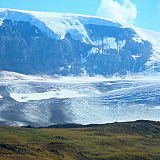
|
Glacier Bay National Park Alaska ☎ +1 907-697-2230 Last Updated: 11/15/2024 |
| Glacier Bay National Park and Preserve is a stunning wilderness located in southeastern Alaska, part of the larger Tongass National Forest. Known for its dramatic landscapes of towering glaciers, snow-capped mountains, deep fjords, and temperate rainforests, it offers a glimpse into a dynamic natural world shaped by ice and water. | |
| - Glaciers: The park is home to over 1,000 glaciers, including tidewater glaciers such as Margerie Glacier, which regularly calves icebergs into the sea. - Wildlife: Glacier Bay supports diverse ecosystems, making it a hotspot for wildlife enthusiasts. Visitors often see humpback whales, orcas, sea otters, harbor seals, and birds like puffins and bald eagles. On land, you may spot brown and black bears, mountain goats, and moose. - Marine Environment: The waters are part of a marine protected area, providing rich feeding grounds for whales and other marine life. - Mountains and Fjords: The park includes portions of the Fairweather Range, with Mount Fairweather (15,325 feet) being one of the tallest peaks in the region. Deep fjords carved by glaciers make for stunning views. | |
Website Wikipedia Facebook
Alaska » Ak
Place » Outdoors

|
Alaska Place » City Alaska is a state in the United States, located in the northwest extremity of North America. It is the largest state in the United States by area, covering over 663,000 square miles (1.7 million square kilometers). The state has a population of about 730,000 people, making it one of the least densely populated states in the US. 216 views 💖 1 👍 0Alaska |

|
Wrangell St. Elias National Park Place » Outdoors Wrangell-St. Elias National Park and Preserve is the largest national park in the United States, situated in southeastern Alaska. It is known for its vast wilderness, rugged mountain ranges, glaciers, and diverse ecosystems. 192 views 💖 1 👍 0Alaska, United States |

|
Great Kobuk Sand Dune Place » Outdoors The Great Kobuk Sand Dunes are a vast expanse of sand dunes located in Kobuk Valley National Park, Alaska. They are the largest active sand dunes in Arctic North America, covering an area of about 25 square miles. The dunes rise as high as 100 feet (30 meters) above the surrounding boreal forest, creating a surreal contrast between the desert-like landscape and the Arctic environment. 200 views 💖 1 👍 0Alaska |
